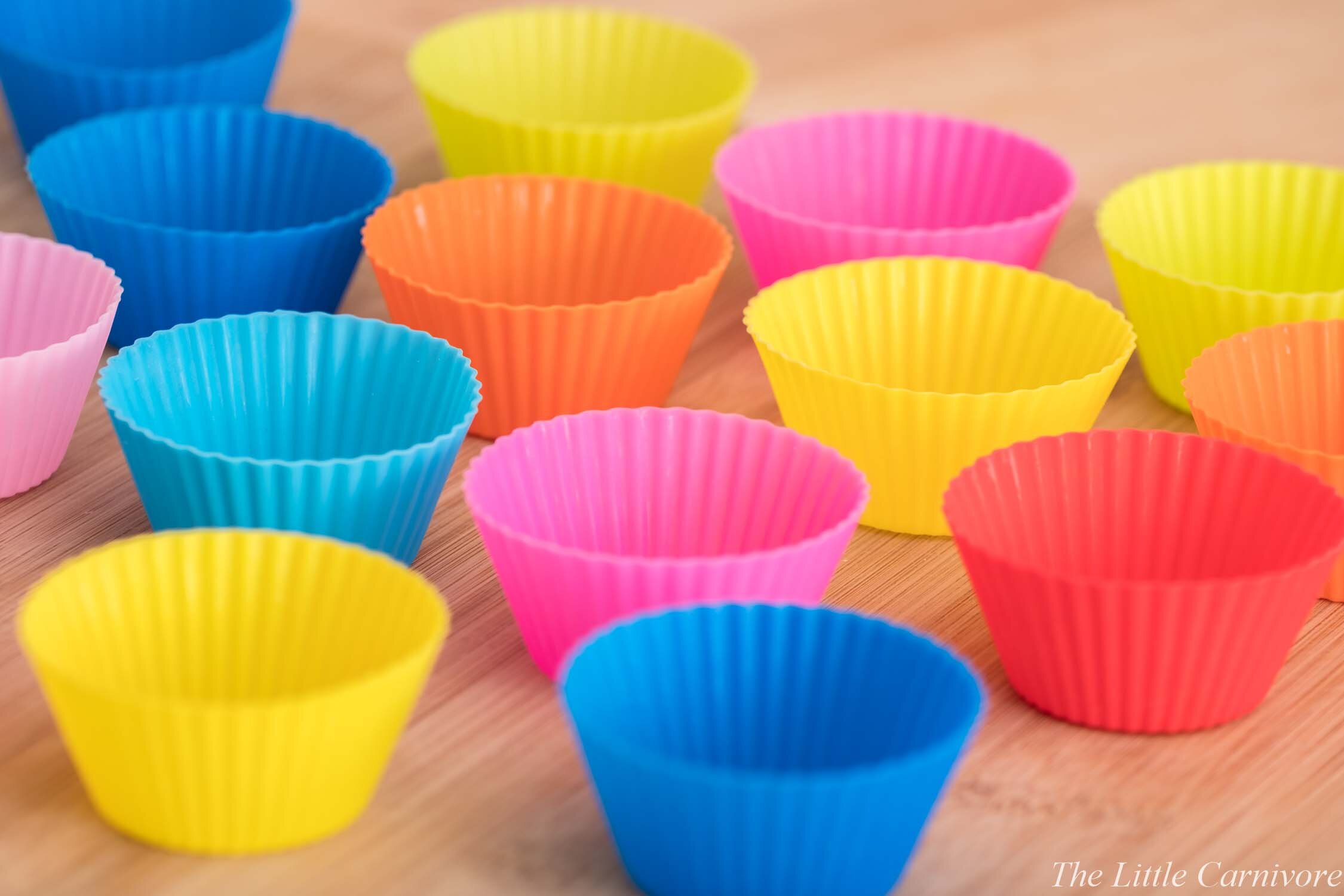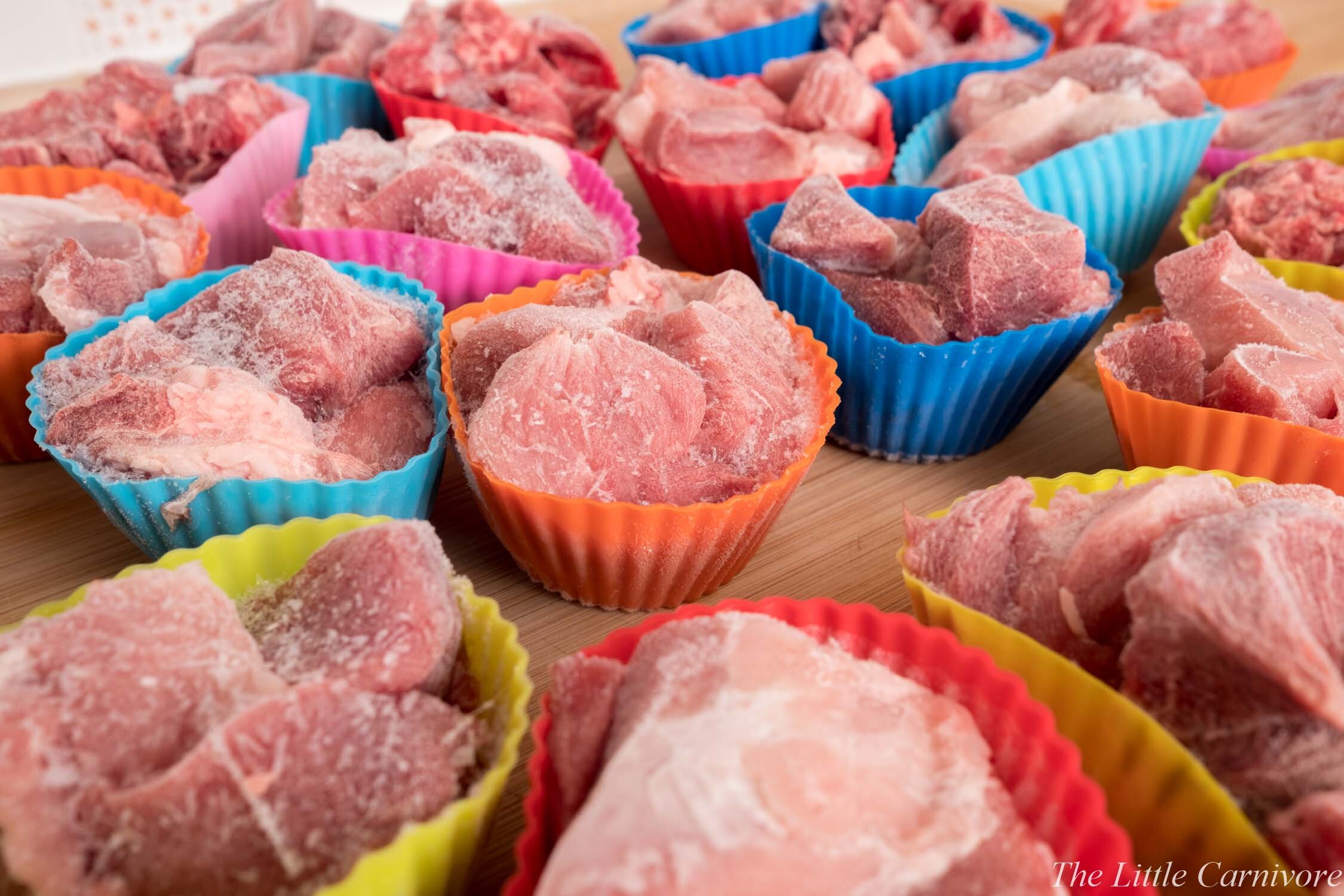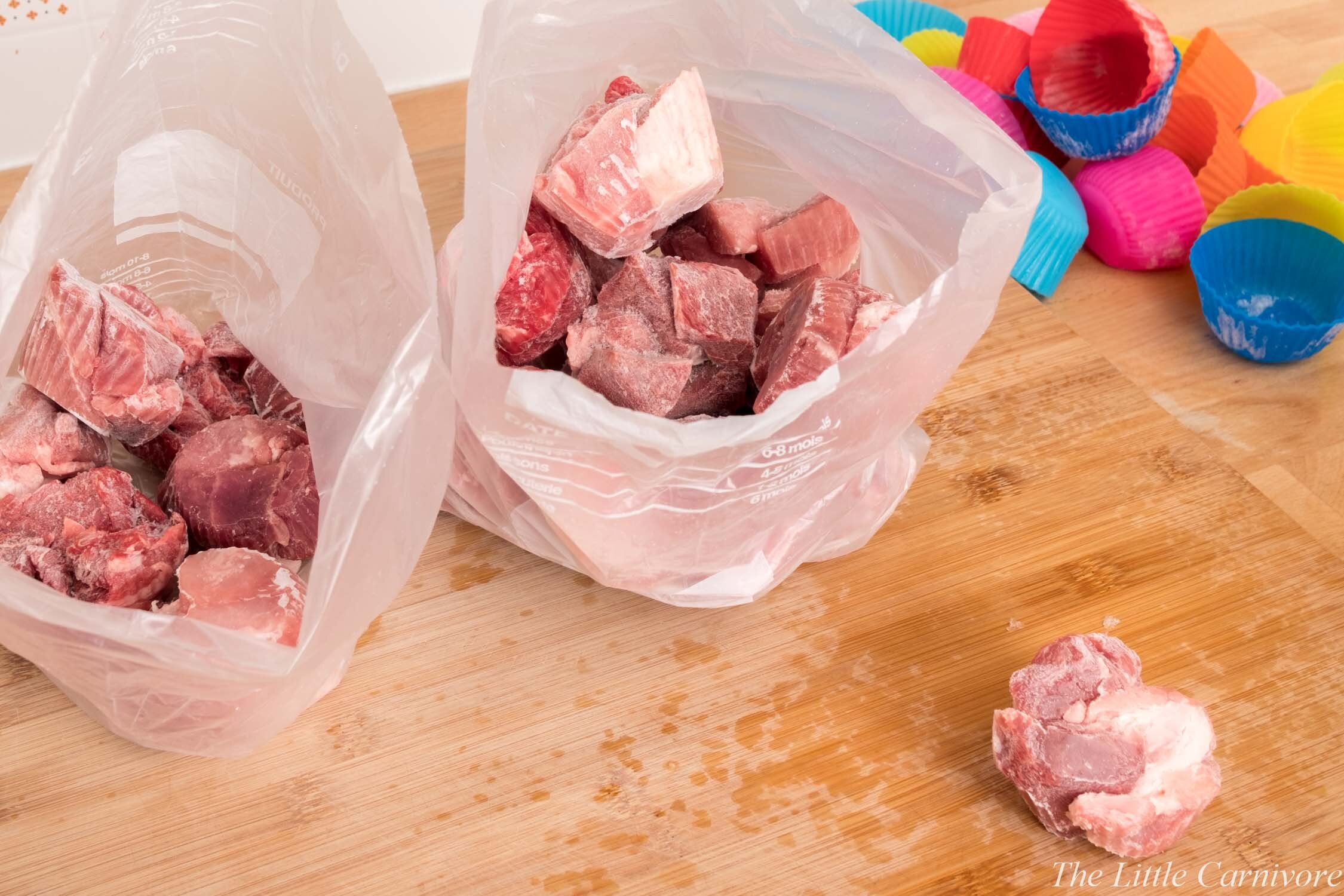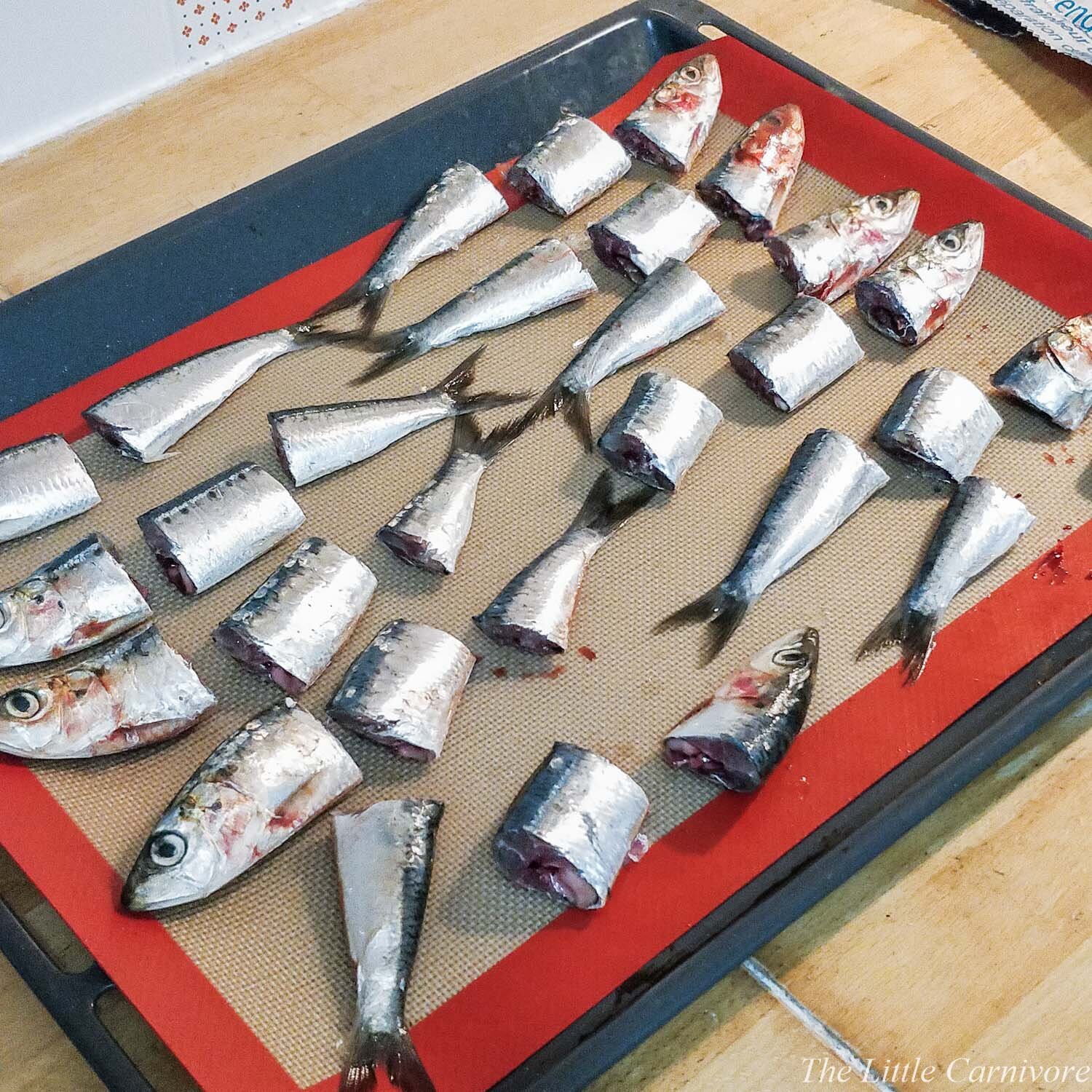How do I prep raw food for my cats?
Raw food preparation is the process that you should do once in a while so that you won’t need to assemble the meals for a cat raw diet on a daily basis. It may seem overwhelming when you start to feed raw and it’s often one of the reasons that make raw feeding intimidating. Naturally, in the beginning, raw food preparation will probably be time-consuming but after a while, you will find what works best for you and the process will become quicker. To help you with this, I’m going to share with you the way I prep the raw food for my cats. I don’t think it’s the most popular way to do it, but it works well for me and it may inspire you!
How I prepare the food
I prepare each element (meat, offals, bones, fish, heart, and supplements) in the diet of my cats separately: I cut and freeze each element of the diet in daily doses.
Every evening, I pick up one piece of each element and I let them thaw in a tupperware in the fridge overnight. The next day, I just have to split the content of the tupperware into three meals and add the supplements that don’t need to be frozen or refrigerated, such as the nutritional yeast, vitamine E, kelp… I use one tupperware for each cat.
Raw meaty bones are not always the same size. For example, chicken necks contain a larger amount of bones than, say, a quail. So, a daily ration would require less chicken necks than quail bones: depending on the case, I either unfreeze a bit more meat (if I feed chicken necks), or I will let some leftover meat (if I feed quail raw meaty bones) for another day.
This means that I don’t prepare whole day rations, but I prepare separately each element when I buy them. I don’t necessarily buy meat, offals, bones at the same time, as I usually buy one or more of these when they are sold at a discounted price at my local supermarket.
To avoid any risk of bacterial contamination, I prefer not to thaw and re-freeze meat which was already frozen. I therefore also avoid buying meat frozen in one single block when I know I need to thaw it entirely in order to prepare it.
What I use
Most of the tools I use to prepare raw food are described in this article on the material needed when you feed raw. You can add to this list silicone mats, silicone cupcake molds, and ice cube trays! I will explain their usage in the following paragraphs.
Cupcake silicon molds
Main elements
Meat
My technique to make a daily dose of meat for a cat is to freeze it in cupcake silicone molds. You may have experienced the fact that if you were to freeze meat pieces in a plastic bag, they will clump and form one solid block that you cannot separate unless you thaw it entirely. To avoid this, I freeze the meat in a cupcake mold for 24 hours. After the 24 hours, I take them off the silicone mold and put them in a plastic bag, as after the 24 hours they are already frozen and they will keep the form of the mold while not sticking to each other. I think that the silicone cupcake molds are perfect to fit up to 100 grams (3.5 oz) of meat.
These are the steps I follow:
I cut all the meat in bite-size pieces for my cats
I fill each cupcake to the weight needed for a daily ration
I put all the cupcakes in the freezer. To do so, I generally place them on a sheet pan that I then put in my freezer
After 24 hours I take the meat out of the silicon molds, and put it back in the freezer in a plastic bag, ready to thaw when needed.
Offals
The daily dose of offals for a cat is much smaller than the one of meat. For this reason, instead of the cupcake silicone molds, I use ice cube trays: one cube for a daily ration of organs for one cat. One cube in an ice tray usually fits both the liver and the other organs needed for a daily ration. Like I do for the meat, after I place the ice cube trays in the freezer for 24h, I pop the meat out from of the trays and put the frozen pieces all together in a plastic bag back in the freezer. I think that standard ice cube trays are perfect to fit quantities up to 20 grams (0.7 oz) of offals.
Example of liver and kidney in ice trays
Bones
When prepping raw meaty bones I use different techniques based on the type of bones. For quails, after cutting them into five pieces (like in the picture), I use silicone molds to freeze the pieces individually.
For chicken necks, I use another technique: after cutting the chicken necks to an appropriate size, I place them on the silicone mat in a way so that they don’t touch each other. I then layer several silicone mats on top of each other if I have big quantities of chicken necks. Like for the cupcake molds and the ice cube trays, after 24 hours in the freezer the chicken necks will be frozen: they can then be tossed together in a plastic bag (they won’t stick!) and put back in the freezer.
How I cut a quail in 5 parts
Fish
I often buy small fish which are already frozen individually: in this case, I don’t need to prepare anything. If I buy fresh fish, I usually use the technique of the silicone mat.
Fish ready to be frozen on a silicon mat
Hearts
When prepping hearts, I use—like for the offals—ice-cube trays. Chicken hearts generally fit perfectly in the tray and for bigger hearts, I cut them in pieces of the adequate size.
Other
Mussels
I get the mussels already frozen individually so I don’t need to prepare anything, and I just pick one for each cat, every day.
Kelp, nutritional yeast, vitamin E, psyllium
All these supplements that I add to my cats’ diet can be kept at room temperature: I just add them when I feed my cats.
Eggs
I keep my quail eggs in the fridge and I add them to the meals when I feed my cats.
Zero-waste
In order to reduce as much as possible the amount of waste when I prep, I reuse the plastic bags in which I put the frozen cat food: I always let them in the freezer and I fill them up whenever I prep more raw food.
All the silicone cupcakes, ice cube trays, silicone mat can be washed and reused.
I like this way to prep raw food for several reasons:
Firstly, I don’t need to thaw and refreeze the meat, which would risk contaminating the meat with bacteria
Secondly, I can keep the raw prep sessions quite short, as I’m not preparing everything in one shot
The only inconvenience would be that it takes me slightly more time every evening, as I need to pick up a cube of each element instead of one bag containing a daily ration.
Another popular method consists of freezing the different elements of a diet when you get them, then partially thaw everything needed to prepare the rations, putting the daily rations in tupperwares, and finally freezing them.
I hope this article was helpful and will help you find what works best for you.









